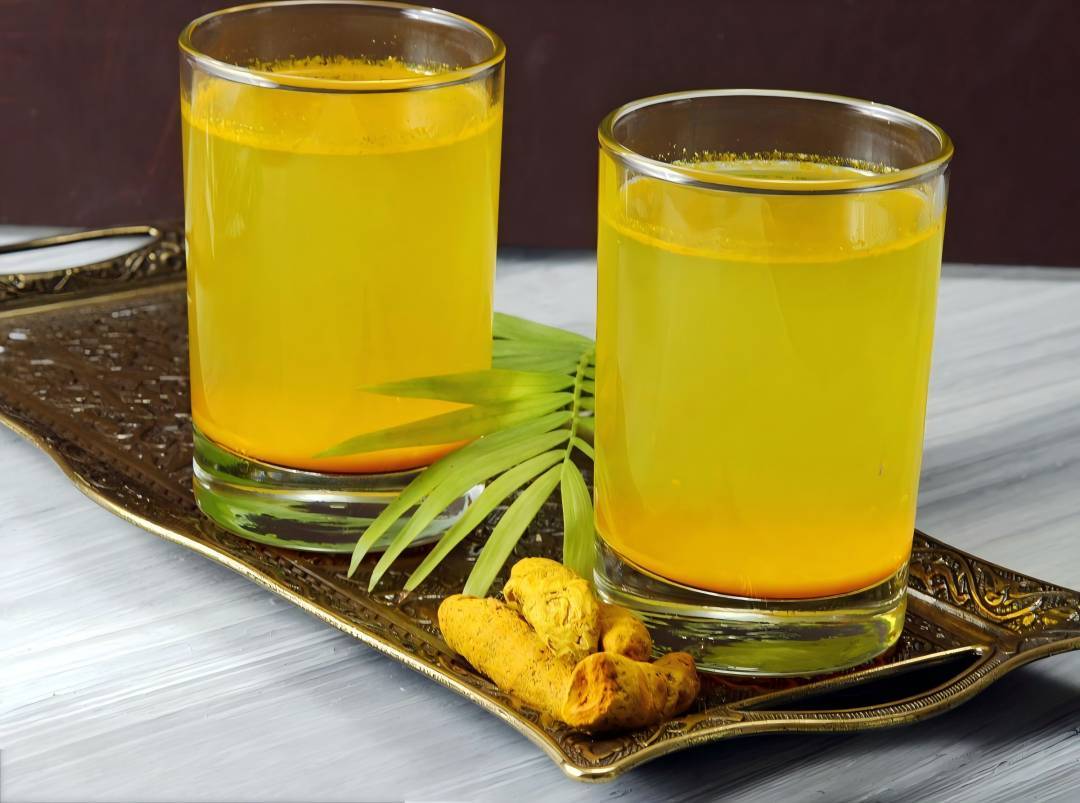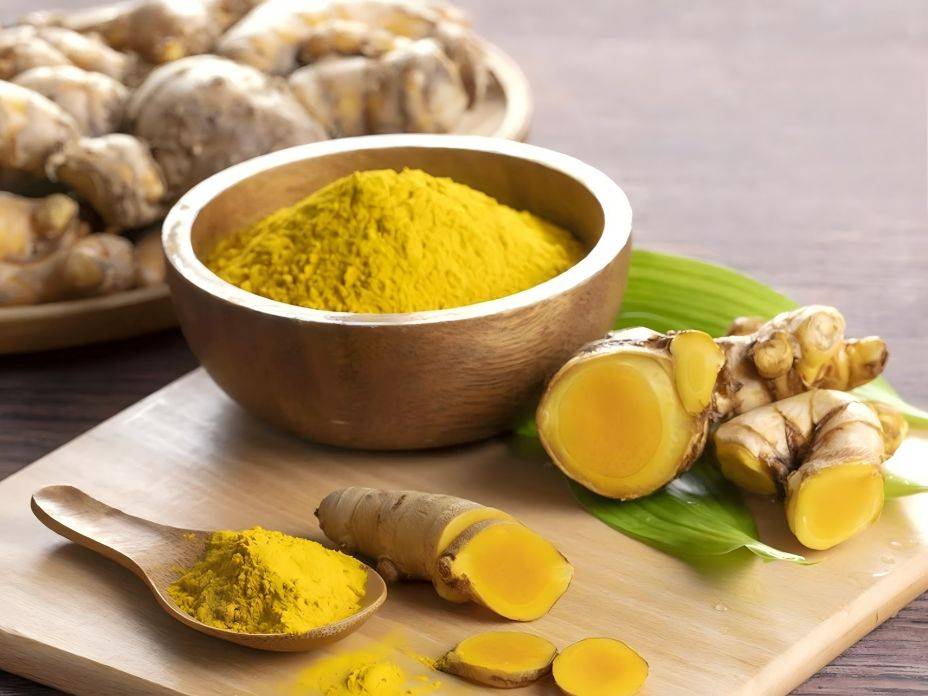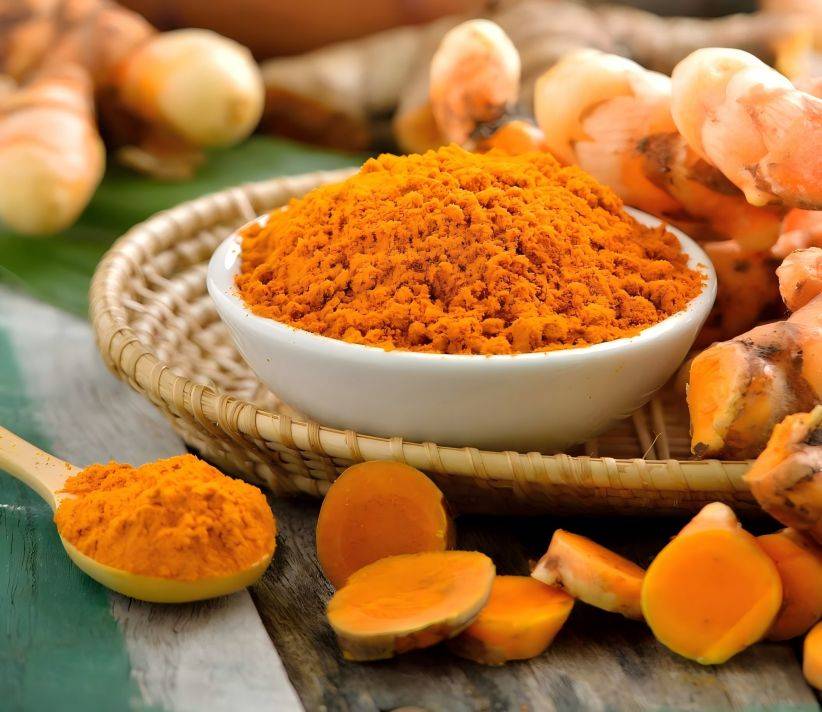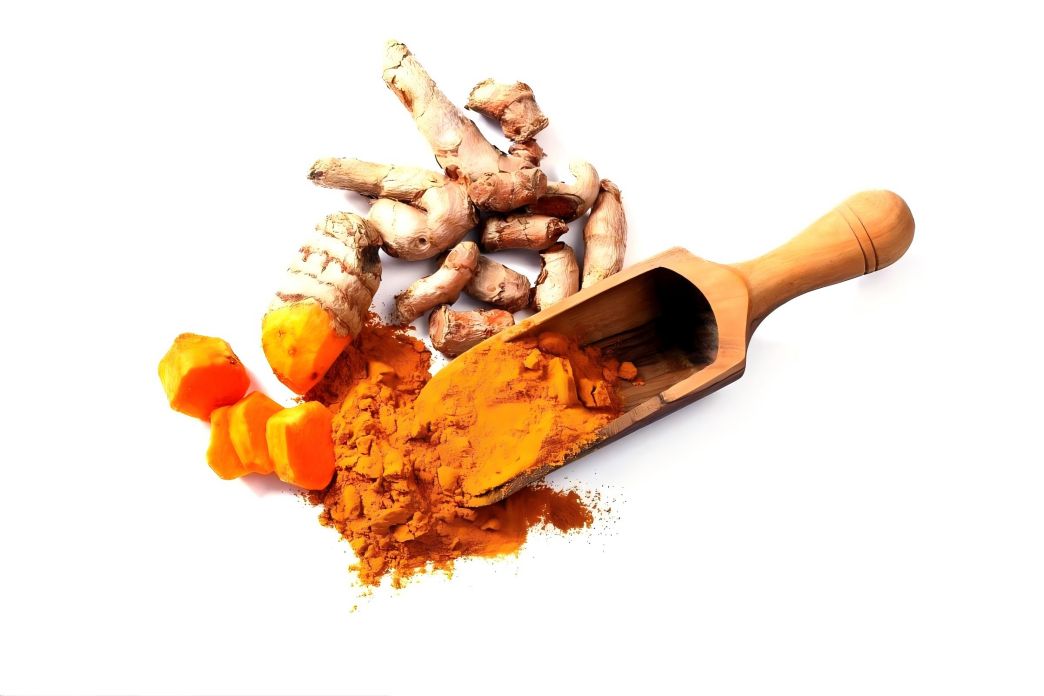What Is Curcumin Powder?
Curcumin, with the molecular formula C21H20O6, is a natural active polyphenolic compound found in the rhizomes of plants in the ginger family such as turmeric, saffron, and galangal, or in the arum family such as calamus[1]. The main forms of curcumin compounds are curcumin, demethylcurcumin and bisdemethylcurcumin, which have similar structures (as shown in Figure 1). They have a melting point of 183°C, are insoluble in water, and are easily soluble in alkaline solutions or organic solvents such as ethanol and acetone. Curcumin is pH-sensitive, and is generally more stable in acidic environments. In neutral and alkaline environments, however, it decomposes more easily. Its color changes with pH, and it appears yellow in acidic and neutral environments and reddish brown in alkaline conditions. It can be used as a pH indicator. As research on curcumin has become more in-depth, it has been found that curcuminoid compounds have many biological activities, such as eliminating inflammation, inhibiting bacteria, resisting free radical production, and inhibiting cancer cell growth (as shown in Table 1).
Turmeric extract has low toxicity and few adverse reactions in humans or animals, and is used in many fields around the world, such as food, pharmaceuticals, health products and cosmetics. For example, it is used as a tea additive in Japan, a cosmetic additive in Thailand, a beverage additive in China, a preservative in South Korea and Malaysia, an anti-inflammatory agent in India and Pakistan, and an additive in mustard, cheese, butter and French fries in the United States[16]. At present, curcumin has not been used efficiently, mainly due to problems such as high purification costs, low bioavailability, and poor water solubility. Researchers at home and abroad have done a lot of research on related scientific issues. To this end, the following will provide a review of the application, preparation methods, and modification research of curcumin.
1 Application of curcumin in the food and feed industries
1.1 Application of curcumin in the food industry
Turmeric extract has good preservative, antibacterial and antioxidant properties, as well as certain health benefits. It is also a natural yellow pigment with a similar taste to turmeric, a light and spicy taste with a bitter aftertaste. Therefore, turmeric extract is used as a coloring agent, preservative and flavoring agent in many types of food.
Turmeric extract is safe and reliable as a coloring agent, and is widely used in coloring meat products, canned foods, pasta products, braised foods, etc. It is one of the seven natural pigments used in countries around the world. Zhang Baojun et al. [17] proved that to achieve the same coloring effect in instant noodle products, the amount of curcumin is significantly less than that of carotene, gardenia yellow, corn yellow and other pigments, and its coloring ability is greater than that of most other pigments.
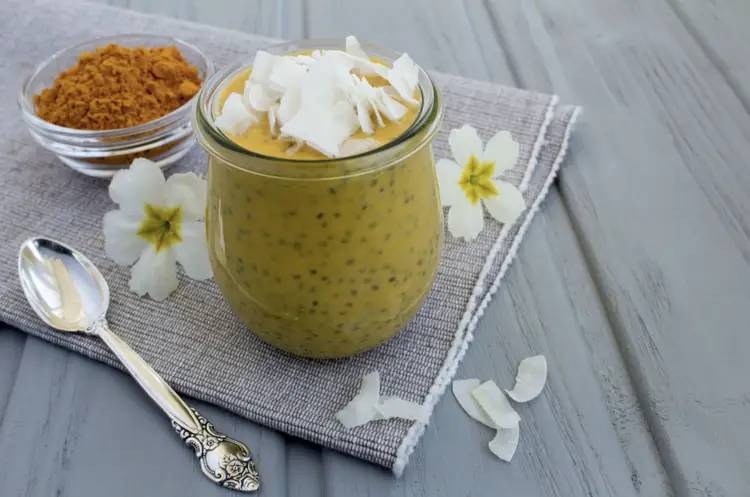
The unique conjugated structure of curcumin gives it good antioxidant properties. Adding it to meat products such as sausages and cutlets can effectively reduce lipid oxidation[18] and effectively reduce the oxidative deterioration of food. Curcumin can also inhibit bacterial growth by binding to tubulin, thereby inhibiting bacterial division and protein synthesis, destroying the integrity of the bacterial cell wall or cell membrane, etc. Adding it to food can effectively prevent the growth of bacteria in food. Teow et al. [19] found that curcumin has a synergistic effect with three antibiotics: gentamicin, amikacin and ciprofloxacin, which significantly enhanced the antibacterial effect. Song et al. [20] found that curcumin at a concentration of 100 μmol/L combined with 30 minutes of light exposure could reduce the rate of production and survival of Penicillium spores, demonstrating the value of curcumin in antifungal applications.
1.2 Application of curcumin in the feed industry
In 2006, the European Union began to comprehensively ban the addition of antibiotics to animal feed [21], and subsequently, many countries, including China, also banned it. In aquaculture, poultry and livestock farming, curcumin can be used as an alternative to antibiotics in feed, which has a positive effect on reducing the use of antibiotics and improving the survival rate and safety of animals. Therefore, curcumin also shows great value in animal feed.
In aquaculture, curcumin has been used in the farming of many types of fish that are commonly consumed [22]. Juvenile fish are vulnerable to various factors that can cause mortality or disease. Studies have found that adding an appropriate amount of curcumin to the farming of grass carp can effectively increase the weight gain rate and survival rate [23]; adding an appropriate amount of curcumin to the feed can effectively regulate the activity of serum transaminase and improve the body color of juvenile eels [24]; experiments by Zhang Yuanyuan et al. [25,26] on tilapia and carp showed that adding 60 mg/kg curcumin to the feed can improve the growth performance of tilapia. In addition, curcumin improves the liver damage repair ability of carp by mediating the nuclear factor related to retinoid 2 system (Nfr2) in hepatocellular carcinoma cells.
Studies on poultry farming have found [27,28] that curcumin can improve the immune level of broilers and regulate their nutritional level, thereby significantly improving their production performance and meat quality. A study by Kuang Chuntao [29] also found that turmeric feed additives can regulate protein and lipid metabolism by regulating the secretion of T3, T4, GH, TG and CHO, thereby increasing the amino acid and fat content of the breast and leg muscles of broilers and improving their slaughter performance.
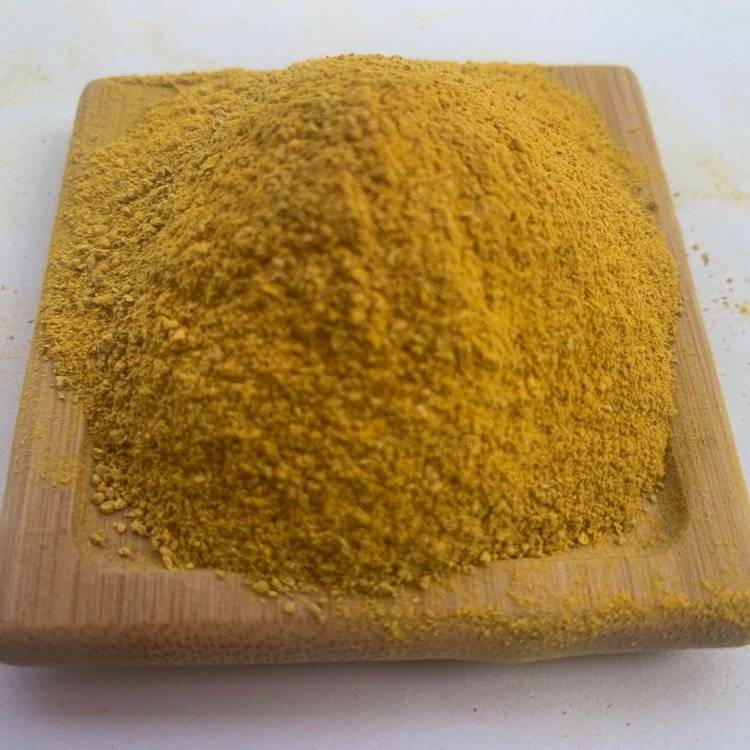
Curcumin can effectively reduce the use of antibiotics in pig farming and improve pig growth performance and feed utilization [30]. Zhou Ming et al. [31] found in experiments that curcumin can replace quinolone in feed. Adding 300–400 mg/kg curcumin to the feed of fattening pigs can improve the weight gain rate, feed conversion rate, and indicators such as blood glucose and total serum protein in pig serum to varying degrees, and has a beneficial effect on pig health. Wang Xia et al. [32] found in experiments that adding curcumin to piglet feed can significantly increase the lean meat rate of pig carcasses and increase the area of the eye muscle, which has a positive effect on piglet production performance.
2 Preparation of curcumin
2.1 Plant extraction
Curcumin is a natural compound widely found in the rhizomes of plants such as turmeric. The most direct way to obtain curcumin is plant extraction. Traditional plant extraction methods include enzymatic methods [33], microwave extraction methods [34], supercritical carbon dioxide extraction methods [35], acid-base methods, and ultrasonic extraction methods [36]. Among these methods, enzymatic methods and ultrasonic extraction methods are highly efficient, but both have the common characteristic of requiring high-quality equipment and large investments [33, 36]. Microwave extraction methods are highly selective for substance extraction, However, microwave radiation poses a risk of leakage and can easily cause damage to the human body [34]. Supercritical CO2 extraction of curcumin can effectively maintain biological activity, but this method is difficult to put into large-scale production. The acid-base extraction method is simple and safe in process, has low requirements for equipment, but it is very easy to cause curcumin to decompose, and it has a greater impact on the environment. The extraction rate is lower than that of other methods.
In recent years, the emerging flash extraction process has been able to effectively extract specific ingredients from plants, with the advantages of high efficiency, short time, and low energy consumption. Dong Qingfei et al. [37] used and optimized the flash extraction process of curcumin, which significantly improved the yield of curcumin compared with traditional methods such as microwave-assisted enzymatic hydrolysis and ultrasonic extraction.
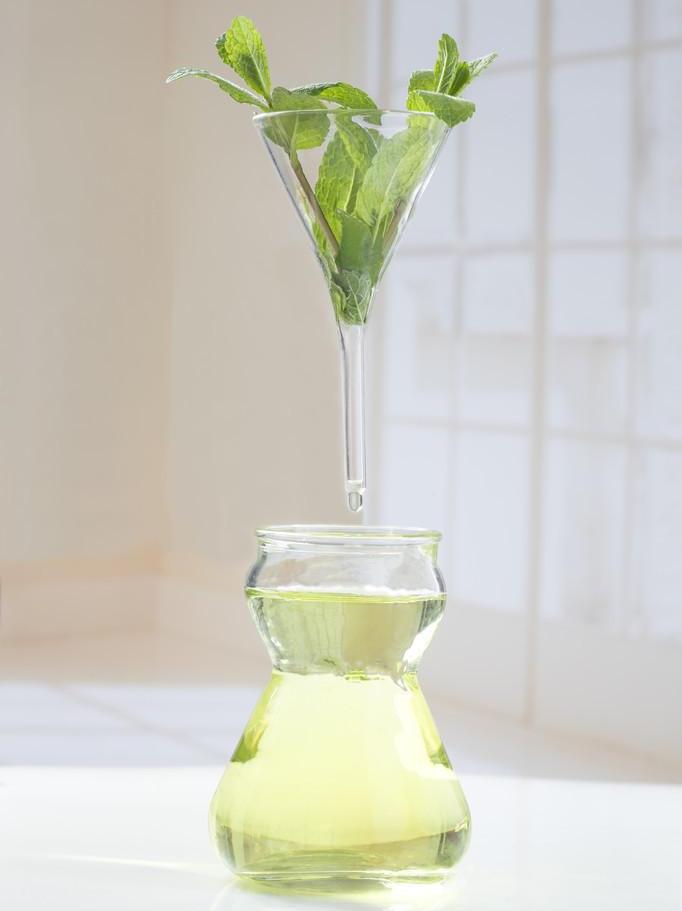
2.2 Chemical synthesis
Turmeric extract is a natural pigment that is widely used in food, medicine, health products, feed and other fields because of its excellent anti-inflammatory and preservative properties. However, the yield of turmeric and other plants containing curcumin is limited, and plant extraction alone cannot meet market demand. Therefore, chemical synthesis of curcumin is a means of supplementing its production. As early as 1997, a classic method for synthesizing curcumin based on tributyltin borane as a raw material was developed abroad [38]; Zhong Yining [39] optimized and improved the above-mentioned classic synthesis method of curcumin, and obtained a method for preparing curcumin using vanillin and acetylacetone as raw materials, which overcomes the disadvantages of the classic synthesis method, such as the high price and flammability of tributyltin borane. Zou Chunyang et al. [40] optimized the process of synthesizing curcumin from vanillin and acetylacetone, which resulted in a feed amount of up to the hundred gram level and an increase in the overall yield of chemically synthesized curcumin.
Tian Taiping [41] used vanillin and acetylacetone as raw materials and further improved the efficiency of chemically synthesizing curcumin using microwave radiation, making the reaction process cleaner, gentler and more effective. Although the chemical synthesis of curcumin has the advantages of being easy to obtain raw materials and being relatively inexpensive, it is not an ideal method for producing curcumin because the amount synthesized is not high, the chemical reagents used can cause environmental pollution and have hidden dangers to the human body.
2.3 Microbial synthesis
In recent years, with the rapid development of synthetic biology, the transformation of microorganisms to produce various natural products based on metabolic engineering technology has become a method. Compared with chemical synthesis methods, it has the advantages of being cleaner and more efficient, and suitable for large-scale mass production. The synthesis of curcumin in living organisms is through the phenylpropanoid pathway. The key enzymes in this pathway for synthesizing curcumin include phenylalanine ammonia lyase (PAL), tyrosine ammonia lyase (TAL), cinnamate-4-hydroxylase (C4H), cinnamate-3-hydroxylase (C3H), O-methoxy transferase (OMT), diketide-CoA synthetase (DCS), and 4-coumate-COA ligase (4CL). OMT), diketide-CoA synthetase (DCS), 4-coumate-COA ligase (4CL), and curcumin synthase (CURS), among which DCS and CURS are the key rate-limiting enzymes in curcumin synthesis [42]. In recent years, researchers have successfully achieved heterologous biosynthesis by reengineering its biosynthesis pathway in Escherichia coli, Yarrowia lipolytica, Pseudomonas putida and Aspergillus oryzae [43].
2.3.1 Curcumin biosynthesis in Escherichia coli
Escherichia coli is a very mature genetic engineering host with simple culture and a clear background in molecular genetics. Most of the research at home and abroad has achieved the biosynthesis of curcumin by constructing an Escherichia coli expression system. Katsuyama et al. [42,44] introduced CURS from rice, 4CL from purple grass and acetyl-coenzyme A carboxylase (ACC) from Bacillus glutamicum were introduced into an E. coli vector by Katsuyama et al. [42,44], and the synthesis of curcumin from ferulic acid was achieved. Rodrigues et al. [45] introduced DCS and CURS from the turmeric plant, 4CL from Arabidopsis, TAL from Rhodotorula glutinis, C3H from Saccharothrix espanaensis and caffeoyl-CoA-3-O-methoxytransferase (CCOAOMT) from alfalfa, to achieve the synthesis of curcumin from tyrosine.
In addition, the team's latest research optimizes the first module of this pathway, from tyrosine to ferulic acid, and obtains a ferulic acid titer of 1,325.1 μmol/L, which is the highest ferulic acid titer reported to date. Subsequently, the second module of the pathway was further optimized using ferulic acid as a substrate, achieving the highest concentration of curcuminoids reported to date of 1,529.5 μmol/L. They also used a co-culture method to further increase the production of curcuminoids by reducing the metabolic burden on the cells. That is, an E. coli strain capable of converting tyrosine to ferulic acid was used, and another strain that could convert the hydroxycinnamic acid produced by the first strain into curcuminoids. Compared with the single culture system, the co-culture strategy increased the total curcuminoids by 6.6 times. These results demonstrate the great potential of modular co-culture engineering for the production of curcumin and other curcuminoids from tyrosine [46]. Zhang Le et al. [47] expressed the DCS-encoding gene and the CURS-encoding gene in a non-natural fusion and introduced them together with the 4CL-encoding gene into E. coli. Using ferulic acid as a precursor, the non-natural fusion gene DCS:CURS was applied in the microbial synthesis of curcumin, and a E. coli strain with a high curcumin yield was obtained, which provides a reference for further optimizing the metabolic network and constructing stronger engineered bacteria in the future.
2.3.2 Biosynthesis of curcumin in other microorganisms
Yeast is also a commonly used chassis cell for genetic engineering, with the advantages of strong stress resistance and genetic stability. Today, many yeasts are used in the food and pharmaceutical industries. For example, Saccharomyces cerevisiae has been used to produce ginsenosides and resveratrol. Claire et al. [48] successfully synthesized bisdemethoxycurcumin by expressing curcumin synthase in S. cerevisiae and adding exogenous 4-coumaric acid. This is the first report of curcumin biosynthesis using yeast as a chassis cell.
Aspergillus oryzae is often used in the production of fermented foods such as soy sauce and rice vinegar. It has the advantage of producing fewer secondary metabolites and is an ideal chassis cell for genetic engineering. Kan et al. [49] overexpressed curcumin synthase in Aspergillus oryzae and successfully synthesized a curcumin analog on agar medium containing feruloyl-N-acetylcysteine. This is the first time that Aspergillus oryzae has been used as a chassis cell for the biosynthesis of curcumin, which is of great reference significance for the heterologous synthesis of curcumin and other polyketides by Aspergillus oryzae.
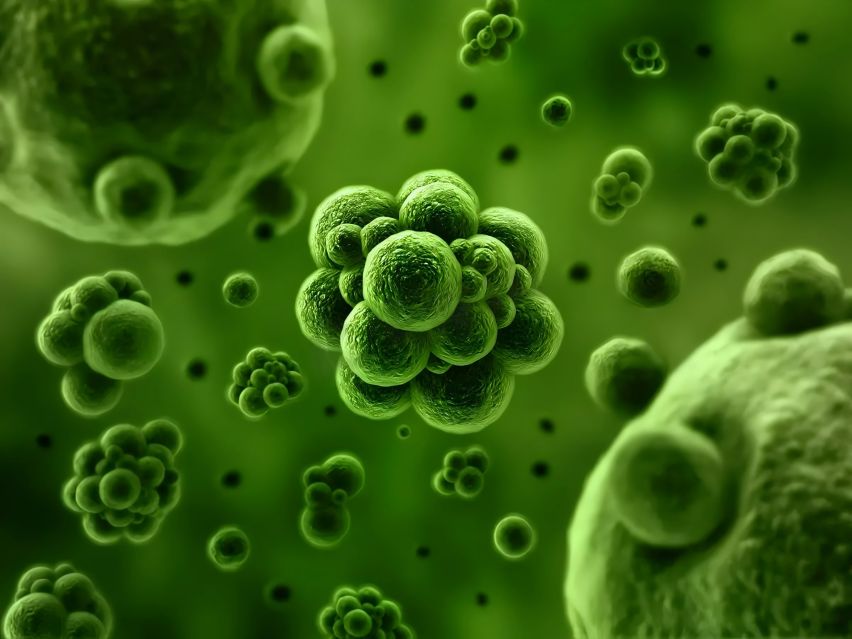
Pseudomonas putida has a diverse carbon metabolic network and strong solvent tolerance, making it an ideal host for metabolic engineering. Incha et al. [50] used the endogenous coumaroyl-CoA synthase in Pseudomonas putida to synthesize coumaroyl-CoA, while knocking out its endogenous enoyl-CoA hydratase to inhibit the degradation of coumaroyl-CoA, and introducing curcumin synthase from rice, and by exogenously adding coumaric acid, successfully synthesized bisdemethoxycurcumin.
3 Modification of curcumin
The many biological activities of curcumin make it have broad application prospects in many fields such as food, medicine and health products. However, its shortcomings such as poor water solubility, chemical instability, low bioavailability, rapid metabolic rate and photodegradability also need to be urgently addressed. In recent years, in order to overcome these problems, researchers have carried out some research on modification such as encapsulation, modification, and emulsification, and have developed different curcumin preparations such as solid dispersions, liposomes, nanoparticles, polymer micelles, microspheres, and β-cyclodextrin inclusion complexes.
3.1 Polymer micelles
Polymer micelles are formed by assembling amphiphilic polymer materials in a solution to form a “hydrophobic core-hydrophilic shell structure” and can be used to increase the solubility of poorly soluble drugs. Common preparation methods include evaporation of organic solvents, emulsification, dialysis, etc. Among them, the emulsion method is suitable for drugs with good fat solubility, but it has high requirements for organic solvents; the dialysis method is simple to operate and has a large drug load, but it is not used for large-scale cultivation; the organic solvent evaporation method is suitable for water-soluble drugs and is simple to operate and can be mass-produced. The disadvantage is that organic solvents are likely to remain [51].
Zhang Qin et al. [52] used distearoyl phosphatidyl ethanolamine-polyethylene glycol as a carrier to construct curcumin micelles, which are more biocompatible than free curcumin. They have a significant ameliorating effect on oxidative stress damage caused by Aβ1-42 and have good prospects for the treatment of Alzheimer's disease. Fan Ziliang et al. [53] constructed a novel graft polymer with undecenoic acid and polylysine and encapsulated curcumin. This study showed that the polymer micelles can help curcumin be taken up by C6 glioma cells and can effectively kill tumor cells, which is inspiring for the application of curcumin in the treatment of tumors.
3.2 Liposomes
Liposomes are vesicles formed by a lipid bilayer surrounding an internal aqueous environment. They are often used as a delivery system for hydrophobic or hydrophilic drugs. They can effectively protect the active substance from contact with the external environment to avoid oxidation, thereby improving its stability and bioavailability [54]. They also have the advantages of high encapsulation rate and low skin irritation. Practice has proved that various curcumin liposomes have achieved remarkable results in improving the bioavailability of curcumin. For example, Zhao Jing et al. [55] prepared curcumin ethanol liposomes using the ethanol injection method, and oral administration experiments in rats proved that curcumin ethanol liposomes had higher absorption than free curcumin, laying the foundation for the preparation of curcumin oral preparations. Meng et al. [56] used low-density lipoprotein to simulate a nano-lipid carrier loaded with curcumin and targeted it to rats with Alzheimer's disease model, and the experiment proved that it had a significant sustained-release effect. Mao Qian et al. also proved that curcumin nanoliposomes have an effective preventive effect on myocardial cell apoptosis and fibrosis caused by diabetes [57].
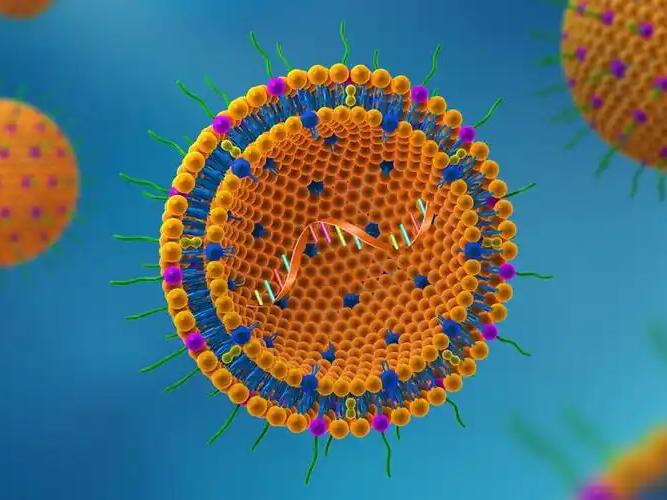
3.3 Solid dispersions
In clinical practice, solid dispersions are the most common method of drug preparation. It involves dispersing the drug in an inert carrier in the form of molecules, colloids or superparticles to increase the solubility of poorly soluble drugs and accelerate the dissolution rate. This technique happens to be able to deal with the characteristics of curcumin, which has poor solubility in water [58], and is conducive to improving the absorption and bioavailability of curcumin. In the study of curcumin dispersants, polyethylene pyrrolidone, copovidone, poloxamer 188, etc. are mostly used as carriers [59], and the preparation methods include co-precipitation, microwave quenching, freeze-drying, and the hot-melt extrusion method and electrospinning technology that have emerged in recent years [60]. Shi Nianqiu et al. [61] found that there are significant differences in dissolution and solubility of curcumin solid dispersions prepared by different processes, among which the microwave quenching method has a more significant effect on improving the solubility of curcumin. Therefore, the author believes that in future research on curcumin solid dispersions, there is still a need for comparative studies of emerging preparation processes and traditional processes, with a view to continuously updating the preparation process that can maximize the value of curcumin solid dispersions.
3.4 Cyclodextrin
Cyclodextrin is a cyclic oligosaccharide formed by cyclodextrin glucanotransferase catalyzing starch. It has a hydrophilic surface and a hydrophobic inner cavity structure [62], so it can be used to encapsulate a variety of hydrophobic small molecule compounds, which helps to improve the water solubility and stability of the active substance. It has been successfully used in medicine, food, biology and other fields. Studies have shown that the cyclodextrin curcumin delivery vehicle has better solubility than free curcumin. β-Cyclodextrin curcumin prepared by grinding has about 100 times better solubility than free curcumin, while β-cyclodextrin curcumin prepared by solvent evaporation and freeze-drying has more than 1,000 times better solubility [63].
3.5 Microspheres
Drug-loaded microspheres are a drug delivery system in which the active substance is encapsulated in a spherical carrier made from raw materials such as starch, chitosan, or gelatin. The particle size is between 0.3 and 300 μm. In terms of application, they have the advantages of multiple drug delivery routes, maintenance of blood drug concentrations, and safety [64]. Studies have shown that curcumin microspheres can significantly improve the performance of curcumin. For example, Wang Huayu et al. [65] used corn porous starch as a carrier to prepare curcumin microspheres, which significantly improved the dissolution rate of curcumin and increased the bioavailability of curcumin. Cai Jiehui et al. [66] used PCL-PEG-PCL copolymer as the carrier to prepare curcumin microspheres, which have a good sustained-release effect on curcumin and its derivatives, and the microspheres have a good scavenging effect on free radicals.
3.6 Nanoparticles
Nanoparticle delivery systems are systems that encapsulate active materials in a carrier of 10–1000 nm to increase the rate of substance delivery [67]. They have the advantages of high loading rates, low toxicity, and large specific surface area of the carrier, and are often used in the food industry. Nanoparticles are targeted and can be directly taken up by cells through endocytosis, which is beneficial to the better therapeutic effect of active substances [68].
Poly (lactic-co-glycolic acid) (PLGA) is one of the most commonly used nanomaterials. It has good biocompatibility and low irritation, and is a good carrier for curcumin. Zhu D.B. [69] and Yang D. et al. [70] used PLGA as a carrier to load curcumin, both of which showed that PLGA nanoparticles effectively improved the water solubility of curcumin and had a good sustained-release effect.
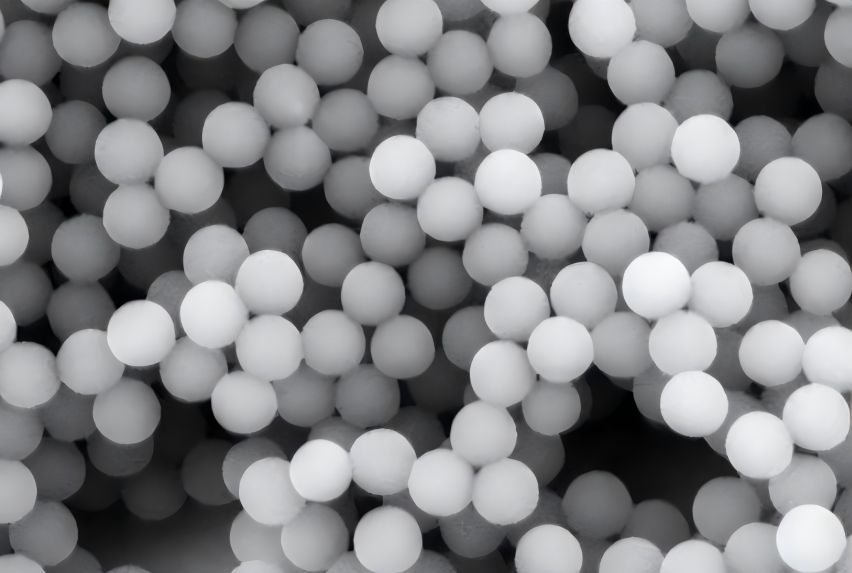
3.7 Structural modification of curcumin
Due to the important role played by curcumin and its derivatives in cancer prevention, in recent years, many scholars have devoted themselves to the structural modification or transformation of curcumin, in an attempt to overcome the problems of poor water solubility, poor stability and low bioavailability of curcumin.
Aggarwal et al. [71] have thoroughly described the sites for curcumin structural modification. The main methods of structural modification include: addition, deletion or replacement of benzene ring substituents, changing the length of the carbonyl chain, changing the diketone structure, replacing the aromatic ring with a heterocyclic ring, and reducing unsaturated bonds. It was found that after the carbon chain of curcumin was shortened from C-7 to C-5, its water solubility and stability were significantly improved, and the anti-tumor activity was significantly enhanced [72]. Weber et al. [73] substituted the aromatic ring of curcumin with hetero-polycyclic rings. The IC50 (half-inhibitory concentration) of this derivative for tumor cells was about 3.9 mol/L, which was much better than the 8.2 mol/L of curcumin itself. Therefore, structural modification of curcumin can improve its bioavailability to a certain extent. Xu Jialin et al. [74] chemically synthesized eight monocarbonyl curcumin analogues and tested them in an in vitro antioxidant experiment. The results showed that replacing the β-diketone unit with a monoketone structure can effectively improve the stability of the analogues, while the hydroxyl substitution site in the analogues is an important factor affecting the antioxidant activity.
Microbial transformation is a method that uses enzymes with different functions in microbial cells to modify the structure of the target compound to obtain different derivatives. Xu Fucheng et al. [75] screened and obtained a strain of lactic acid bacteria that produces β-glucosidase, and used the reverse reaction activity of this bacterial β-glucosidase to catalyze the glycosylation of curcumin molecules. The products were identified as curcumin diglucoside and curcumin monoglucoside. Chen Bingsong [76] expressed a glucosyltransferase from Vincaleia grandiflora in Escherichia coli and catalyzed the glucosylation of curcumin and its reduced products in a whole-cell system. Finally, glucosylated tetrahydrocurcumin and glucosylated hexahydrocurcumin were successfully prepared and isolated. Li Yixuan [77] heterologously expressed the glycosyltransferase gene from Bacillus subtilis Bs168 in Escherichia coli, obtained the purified glycosyltransferase and catalysed curcumin, ultimately obtaining two curcumin derivatives with significantly higher water solubility and antioxidant properties than curcumin.
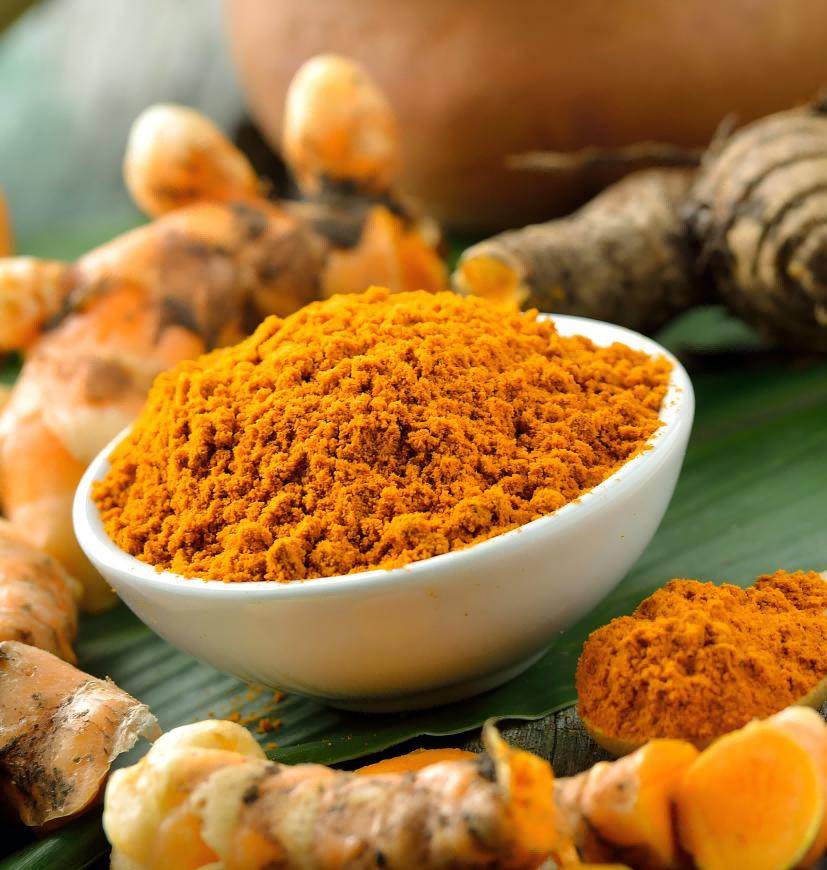
4 Conclusion
Turmeric extract has good application prospects in many fields due to its good biological activity, but its high purification cost and unstable nature limit its efficient application. This paper reviews the research progress in solving related problems. In addition to traditional plant extraction and chemical synthesis, curcumin can also be synthesized in large quantities by constructing recombinant microorganisms. The purification cost is low and it is environmentally friendly. There have also been a large number of research reports on modification methods, which can improve the bioavailability and stability of curcumin to a certain extent, but further research is still needed on the safety and stability of the methods.
As research into the physiological functions of curcumin continues to deepen, so too does the market for curcumin products. Future research directions could consider improving the level of microbial synthesis of curcumin or increasing the curcumin content in turmeric and optimizing the extraction process. In addition, the introduction of new materials is also one of the hot research directions for the application of curcumin modification. In terms of future medical applications, although many cell experiments and clinical trials have shown that the mechanism of curcumin is related to different intracellular signal pathways, the molecular mechanism of curcumin interacting with various signal pathways has not yet been specifically elucidated. Therefore, more in-depth research should be conducted on its mechanism of action. In terms of future food applications, curcumin currently still exists as a coloring agent or preservative, and in the future, it can be characterized by its physiological functions to increase the added value of such foods.
Reference:
[1]MURRAY-STEWART T, CASERO R A. Regulation of polyamine metabolism by curcumin for cancer prevention and therapy [J]. Medical Sciences, 2017, 5(4): 38.
[2]WANG T Y, CHEN J X. Effects of curcumin on vessel formation insight into the pro- and antiangiogenesis of curcumin [J]. Evidence-Based Complementary and Alternative Medicine, 2019, 2019: 1390795.
[3]CELIK H, AYDIN T, SOLAK K, et al. Curcumin on the "flying carpets" to modulate different signal transduction cascades in cancers: Next-generation approach to bridge translational gaps [J]. Journal of Cellular Biochemistry, 2018, 119(6): 4293-4303.
[4]WANG Y, LU Z X, WU H, et al. Study on the antibiotic activity of microcapsule curcumin against foodborne pathogens [J]. International Journal of Food Microbiology, 2009, 136(1): 71-74.
[5] Fan Shizhen, Wang Wenjie, Yu Bohai. Research progress on the antiviral effect of curcumin [J]. Journal of Modern Integrative Medicine, 2020, 29(24): 2734-2736.
[6] Sun Yiyang, Peng Ziyi, Zhao Yuxin, et al. Research progress on the anti-inflammatory effect of curcumin in disease treatment [J]. Chinese Medical Innovation, 2021, 18(27): 181-184.
[7] Shi Ying, Li Shuping. Research progress of curcumin in clinical treatment [J]. Journal of Liaoning University of Traditional Chinese Medicine, 2019, 21(6): 175-178.
[8]SHARIFI-RAD J, RAYESS Y E, RIZK A A, et al. Turmeric and its major compound curcumin on health: bioactive effects and safety profiles for food, pharmaceutical, biotechnological and medicinal applications [J]. Front Pharmacol, 2020, 11: 1021.
[9]XU Y, KU B S, YAO H Y, et al. Antidepressant effects of curcumin in the forced swim test and olfactory bulbectomy models of depression in rats [J]. Pharmacology, Biochemistry and Behavior, 2005, 82(1): 200-206.
[10]PARASURAMAN S, ZHEN K M, BANIKU. Ameliorative effect of curcumin onolanzapine-induced obesity in sprague-dawley rats [J]. Pharmacognosy Research, 2017, 9(3): 247-252.
[11]RASMUSSEN H B, CHRISTENSEN S B, KVIST L P, et al. A simple and efficient separation of the curcumins, the antiprotozoal constituents of curcuma longa [J]. Planta Medica, 2000, 66(4): 396-398.
[12]KOWLURU R, KANWAR M. Effects of curcumin on retinal oxidative stress and inflammation in diabetes [J]. Nutrition & Metabolism, 2007, 4(1): 8.
[13]JAGETIA G C, AGGARWAL B B. "Spicing up" of the immune system by curcumin [J]. Journal of Clinical Immunology, 2007, 27(1):17.
[14]BAVARSAD K, BARRETO G E, HADJZADEH M, et al. Protective effects of curcumin against ischemia-reperfusion injury in the nervous system [J]. Molecular Neurobiology, 2019, 56(2): 1391-1404.
[15]PAN K, ZHONG Q, BAEK S J. Enhanced dispersibility and bioactivity of curcumin by encapsulation in casein nanocapsules.[J]. Journal of Agricultural and Food Chemistry, 2013, 61(25): 6036-6043.
[16]HEWLINGS S J, KALMAND S. Curcumin: a review of its effects on human health [J]. Foods, 2017, 6(10): 92.
[17] Zhang Baojun, Zhang Wei. The physiological functions of curcumin and its application in instant noodles [J]. China Food Additives, 2001(04): 37-38.
[18] Guo Yinghui, Li Hongjun, Xing Genan, et al. Research progress on the extraction, physiological properties and application of curcumin in meat products and fresh meat [J]. Food and Fermentation Industry, 2023, 49(20): 339-345.
[19]TEOW S, ALI S A. Synergistic antibacterial activity of curcumin with antibiotics against staphylococcus aureus [J]. Pakistan Journal of Pharmaceutical Sciences, 2015, 28(6): 2109.
[20]SONG L L, ZHANG F, YU J S, et al. Antifungal effect and possible mechanism of curcumin mediated photodynamic technology against Penicillium expansum [J]. Postharvest Biology and Technology, 2020, 167(C): 111234.
[21] Yan Guohua, Yang Yuzeng, Zhang Qiuliang. Prospects for the application of curcumin as an antibiotic substitute in pig feed [J]. Northern Animal Husbandry, 2016 (21): 28-29.
[22] Qi Baoxia, Chi Xianghui, Qiao Xinguo. Application of the green additive curcumin in aquaculture [J]. Scientific Fish Farming, 2019 (10): 68.
[23] Fu Chao, Liu Zhonghui, Cai Xin, et al. Effect of curcumin on the growth performance of grass carp [J]. Jiangxi Fisheries Science and Technology, 2022(5):23-24.
[24] Zhu Huaning, Yang Jun, Zhai Shaowei. Effect of curcumin added to feed on liver health and body color of juvenile American eels [J]. Feed Research, 2020, 43(9): 46-49.
[25] Zhang Yuanyuan, Song Liping, Hu Bin, et al. Effect of curcumin added to feed on the growth of Nile tilapia fry and carbon tetrachloride-induced liver damage [J]. Chinese Journal of Fisheries Science, 2018, 25(6): 1271-1280.
[26] Zhang Yuanyuan, Song Liping, Guo Hui, et al. Curcumin's repair effect on carbon tetrachloride-induced liver damage in carp [J]. Journal of Guangdong Ocean University, 2020, 40(5): 1-11.
[27] Chen Mingxia, Fang Xinling, Liu Xianxu. Research progress on the physiological functions of curcumin and its application in broiler production [J]. Heilongjiang Animal Husbandry and Veterinary Medicine, 2020(11):43-46.
[28] Wang Min, Wang Hongbiao, Ma Xiaorui, et al. Research progress on the extraction, physiological functions and application of curcumin in broiler production [J]. China Animal Husbandry Journal, 2022, 58(10): 59-64.
[29] Kuang Chuntao. Encapsulation, structural modification and research on turmeric feed additives [D]. Changsha: Central South University of Forestry and Technology, 2012.
[30] Yan Guohua, Yang Yuzeng, Zhang Qiuliang, et al. The application and promotion of curcumin in pig production [J]. Northern Animal Husbandry, 2020 (3): 20-21
[31] Zhou Ming, Zhang Jing, Shen Shuting, et al. Research on the application effect of curcumin in fattening pigs [J]. Chinese Journal of Cereals, Oils and Foodstuffs, 2014, 29 (3): 67-73.
[32] Wang Xia, Long Huixue, Zhou Yi. Effect of curcumin as a feed additive on the performance of piglets—taking Xiangxi Xiaohuangjiang as an example [J]. Smart Agriculture Guide, 2022, 2(19):27-29.
[33] Ning Na, Han Jianjun, Hu Yuli, et al. Process research on microwave-assisted enzymatic extraction of curcumin from turmeric [J]. Chinese Journal of Veterinary Medicine, 2015, 49(12): 20-26.
[34] Liu Caiqin, Zhao Dan, Zhu Min. Study on the microwave extraction process and antioxidant activity of curcumin [J]. Food Industry Science and Technology, 2012, 33(10): 302-305.
[35] Huang Huifang, Chen Yuexin, Lv Ping, et al. Pilot study on the supercritical CO_2 extraction of curcumin process [J]. Food Industry, 2011, 32(1): 32-33.
[36] Hui Ruihua, Hou Dongyan, Li Tiechun, et al. Study on ultrasonic extraction method of natural pigment curcumin [J]. Journal of Anshan Normal University, 2019, 21(6): 39-42.
[37] Dong Qingfei, Su Hang, Xiao Zhiyong, et al. Optimization of the flash extraction process of curcumin using response surface methodology [J]. Food Industry, 2022, 43(2): 115-119.
[38]A. NN, M. S R, H T, et al. Synthesis of some symmetrical curcumin derivatives and their antiinflammatory activity[J]. European Journal of Medicinal Chemistry, 1997,32(4): 321-328.
[39] Zhong Yining. Research on the improvement of curcumin synthesis method [J]. Journal of Jiangxi Normal University (Natural Science Edition), 2007 (3): 282-284.
[40] Zou Chunyang, Wang Fengqiu, Tian Jiaming. Research on the synthesis process of the natural product curcumin [J]. Chinese Journal of Traditional Chinese Medicine, 2011, 29 (9): 2101-2103.
[41] Tian Taiping, Xu Jun, Liu Yanhua, et al. Orthogonal design to optimize the synthesis conditions of curcumin under microwave irradiation [J]. Journal of Jiangxi University of Traditional Chinese Medicine, 2017, 29(3): 79-81.
[42]KATSUYAMA Y, KITA T, FUNA N, et al. Curcuminoid biosynthesis by two type III polyketide synthases in the herb Curcuma longa [J]. The Journal of Biological Chemistry, 2009, 284(17): 11160-11170.
[43] Wang L, Han X, Wang F, et al. Research progress in the biosynthesis of curcuminoids. Chinese Journal of Bioengineering, 2021, 37(2): 404-417.
[44]YOHEI K, YUTAKA H, NOBUTAKA F, et al. Precursor-directed biosynthesis of curcumin analogs in Escherichia coli [J]. Bioscience, Biotechnology, and Biochemistry, 2010, 74(3): 641-645.
[45] RODRIGUES J L, ARAÚJO R G, PRATHER K L J, et al. Production of curcuminoids from tyrosine by a metabolically engineered Escherichia coli using caffeicacid as an intermediate [J]. Biotechnology Journal, 2015, 10(4): 599-609.
[46]RODRIGUES J L, GOMES D, RODRIGUES L R. A Combinatorial approach to optimize the production of curcuminoids from tyrosine in Escherichia coli [J]. Frontiers in Bioengineering and Biotechnology, 2020,8(59):1-15.
[47] Zhang Le, Ding Ning, Hai Yan, et al. Construction of an engineered Escherichia coli strain producing curcumin [J]. Chinese Journal of Bioengineering, 2021, 37(6): 2077-2084.
[48]CLAIRE M P, KELLY K M, ANKIM N, et al. Engineering 4-coumaroyl-CoA derived polyketide production in Yarrowia lipolytica through a β-oxidation mediated strategy [J]. Metabolic Engineering, 2020, 57(C): 174-181.
[49]KAN E, KATSUYAMA Y, MARUYAMA J, et al. Production of the plant polyketide curcumin in Aspergillus oryzae : strengthening malonyl-CoA supply for yield improvement [J]. Bioscience, Biotechnology, and Biochemistry, 2019, 83(7): 1372-1381.
[50]MATTHEW R I, MITCHELL G T, JACQUELYN M B, et al. Leveraging host metabolism for bisdemethoxycurcumin production in Pseudomonas putida [J]. Metabolic Engineering Communications, 2020, 10(C): 119.
[51] Li Li, Chen He, Kuang Yanqing, et al. Research progress of curcumin preparations [J]. Guangzhou Chemical Industry, 2021, 49(16): 1-3.
[52] Zhang Q, Kuang Y, Li F. Protective effect of curcumin micelles on Aβ_(1-42)-induced damage to HT22 cells. Anatomical Research, 2019, 41(2): 81-87.
[53] Fan Ziliang, Jin Binghui, Xu Xiangfang, et al. Preparation and in vitro antitumor evaluation of curcumin-loaded nanomicelles [J]. Journal of Wenzhou Medical University, 2017, 47(9): 625-630.
[54] Dong Hongchun, Fu Cong, Yang Xianqing, et al. Research progress on the characteristics, preparation and evaluation of carotenoid liposomes [J]. Food and Fermentation Industry, 2022, 48(14): 303-310.
[55] Zhao Jing, Li Yuan, Shi Mingxin, et al. Pharmacokinetic study of curcumin ethyl ester liposome in rats [J]. Journal of Sichuan University (Medical Sciences), 2017, 48(2): 290-294.
[56]MENG F F, SAJID A, GAO S Y, et al. A novel LDL-mimic nanocarrier for the targeted delivery of curcumin into the brain to treat Alzheimer's disease [J]. Colloids and Surfaces B: Biointerfaces, 2015, 134: 88-97.
[57] Mao Qian, Tian Weiqiang, Ding Wei. Preventive effect of curcumin nanoliposomes on diabetic cardiomyopathy [J]. Medical Herald, 2018, 37(11): 1316-1320.
[58] Zhang Linhai. Overview of the application of solid dispersion technology in traditional Chinese medicine preparations [J]. Inner Mongolia Traditional Chinese Medicine, 2015, 34(11): 98-99.
[59] Pu Lili, Gao Jie, Lai Xianrong. Preparation and in vitro evaluation of solid dispersion of turmeric extract [J]. Chinese Herbal Medicine, 2022, 53(1): 99-106.
[60] Zeng Qingcheng. Research progress of solid dispersion technology [J]. Zhongnan Pharmacy, 2017, 15(1): 81-84.
[61] Shi Nianqiu, Zhang Yong, Feng Bo, et al. Comparative study on the properties of curcumin solid dispersions prepared by different preparation processes [J]. Chinese Journal of Pharmacy, 2016, 51(10): 821-826
[62] Shen Yumiao, Wang Qian, Guo Yu, et al. Research progress of cyclodextrin and its derivatives-based delivery systems in the food industry [J]. Food Industry Science and Technology, 2022, 43(24): 496-505.
[63]GHANGHORIA R, KESHARWANI P, AGASHE H B, et al. Transdermal delivery of cyclodextrin-solubilized curcumin [J]. Drug Delivery and Translational Research, 2013, 3(3): 272-285.
[64] Han Min, Su Xiuxia, Li Zhongjin. Research progress of drug-loaded microspheres [J]. Applied Chemical Industry, 2007(5): 493-495.
[65] Wang Huayu, Shen Chaolu, Yuan Yue, et al. Optimization of preparation, physicochemical properties and release of curcumin-loaded corn porous starch microspheres [J]. Food and Fermentation Industry, 2023, 49(3): 182-188.
[66] Cai Jiehui, Yang Yingquan, Zheng Yanfei. Preparation and drug release and antioxidant properties of curcumin-loaded PCL-PEG-PCL microspheres [J]. Modern Chemical Industry, 2022, 42(7): 201-206.
[67]SOUTO E B, BALDIM I, OLIVEIRA WP, et al. SLN and NLC for topical, dermal, and transdermal drug delivery [J]. Expert Opinion on Drug Delivery, 2020, 17(3): 357-377.
[68] Wang Jiu-ling, Sun Jia-shu, Shi Xing-hua. Interaction between nanoparticles and cells [J]. Science Bulletin, 2015, 60(21): 1976-1986.
[69] Zhu Di-bing, Zhao Hai-yan, He Jian-dan, et al. Preparation and characterization of curcumin PLGA nanoparticles [J]. Asia-Pacific Traditional Medicine, 2020, 16(3): 46-49.
[70] Yang Dan, Yuan Ying, Yao Xiaolin, et al. Curcumin nanoparticle construction and in vitro cell uptake [J]. Food Science, 2023, 44(16): 42-49.
[71]PREETHAA, SHERIN G T, AJAIKUMAR BK, et al. Biological activities of curcumin and its analogues (Congeners) made by man and Mother Nature [J]. Biochemical Pharmacology, 2008, 76(11): 1590-1611.
[72]FANG X B, FANG L, GOU S H, et al. Design and synthesis of dimethylaminomethyl-substituted curcumin derivatives/analogues:Potent antitumor and antioxidant activity,improved stability and aqueous solubility compared with curcumin [J]. Bioorganic & Medicinal Chemistry Letters, 2013, 23(5): 1297-1301.
[73]WAYLON M W, LUCY AH, C. N R, et al. Activation of NFκB is inhibited by curcumin and related enones [J]. Bioorganic & Medicinal Chemistry, 2005, 14(7): 2450-2461.
[74] Xu Jialin. Extraction, synthesis and activity research of curcumin compounds [D]. Hangzhou: Zhejiang University of Technology, 2019.
[75] Xu Fucheng, Wu Chuanchao, Gu Qiuya, et al. Fermentation method for producing water-soluble curcumin [J]. Food and Fermentation Industry, 2019, 45(11): 46-51.
[76] Chen Bingsong. Biotransformation of glycosylated derivatives of curcumin and its analogues [D]. Tianjin: Tianjin University of Traditional Chinese Medicine, 2021.
[77] Li Yixuan. Research on the biotransformation of lignin resources from agriculture and forestry waste to synthesize curcumin [D]. Zhenjiang: Jiangsu University, 2022.


 English
English French
French Spanish
Spanish Russian
Russian Korean
Korean Japanese
Japanese